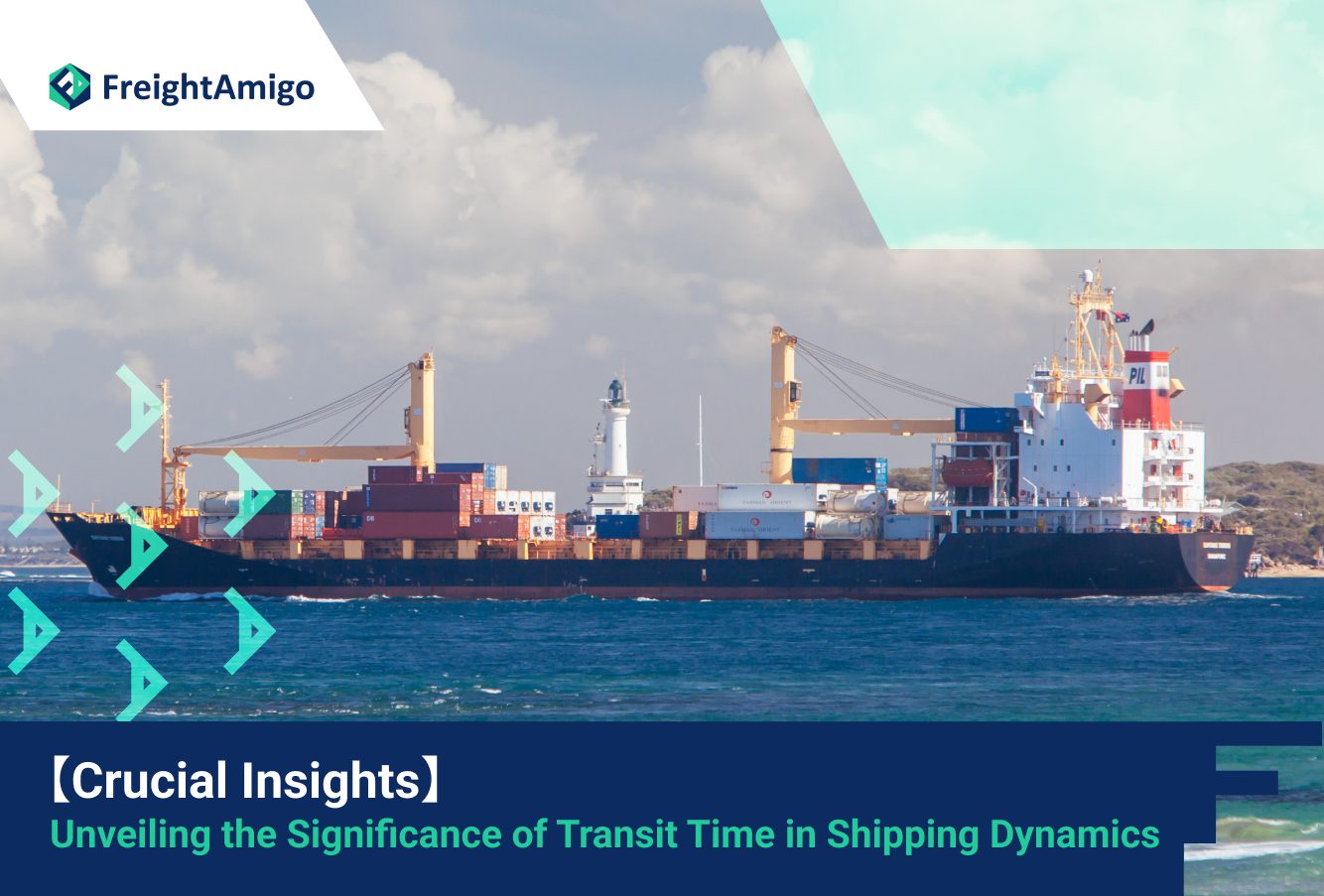Author Name: Tiffany Lee – Marketing Analyst at FreightAmigo
Introduction to transit time in shipping
Transit time is a critical factor in the shipping industry that refers to the duration it takes for a package to travel from the point of origin to the final destination. It plays a crucial role in determining the efficiency and reliability of the shipping process. Understanding transit time is essential for both businesses and individuals who rely on shipping services to ensure timely delivery of goods.
Want To Compare The Best Express, Air Freight, Sea Freight, Rail Freight & Trucking Rates So As To Have Better Control On Cost?
Understanding the concept of transit time
Transit time is the time taken for a shipment to move from one location to another. It includes the time spent in loading and unloading, as well as any delays that may occur during transportation. It is important to note that transit time can vary depending on several factors, such as the distance between the origin and destination, the mode of transportation, and any customs procedures that need to be followed.
Factors affecting transit time
Several factors can affect the transit time of a shipment. One of the primary factors is the distance between the origin and destination. Longer distances usually result in longer transit times. The mode of transportation also plays a significant role. For example, air freight is generally faster compared to sea freight. Other factors that can impact transit time include weather conditions, customs clearance procedures, and any unforeseen events like accidents or strikes.
Importance of transit time in the shipping industry
Transit time is of utmost importance in the shipping industry for various reasons. Firstly, it directly affects customer satisfaction. Timely delivery of packages is crucial for businesses to meet their customers’ expectations and maintain a positive reputation. Secondly, transit time impacts inventory management. Longer transit times mean longer lead times, which can result in increased inventory holding costs. Lastly, transit time affects supply chain efficiency. By minimizing transit time, businesses can streamline their operations and reduce overall costs.
Tracking your package in transit
One of the common concerns when a package is in transit is how to track its progress. Fortunately, most shipping companies provide tracking services that allow customers to monitor their shipments in real-time. Tracking numbers are assigned to each package, enabling customers to access information about the current location and estimated delivery date. Tracking packages in transit provides peace of mind and allows businesses and individuals to plan accordingly.
How to minimize transit time
Minimizing transit time is a goal for both shipping companies and customers. There are several strategies that can be employed to achieve this. Firstly, optimizing transportation routes can significantly reduce transit time. By identifying the most efficient routes, companies can shorten the distance traveled and minimize delays caused by traffic or other obstacles. Secondly, leveraging technology can help streamline processes and improve efficiency. Automated systems for order processing, inventory management, and tracking can save valuable time and reduce errors.
Dealing with delays in transit time
Despite all efforts, delays in transit time can still occur. It is crucial to have contingency plans in place to handle such situations. Effective communication with customers is key. If there are delays, keeping customers informed about the status of their shipments and providing realistic delivery estimates can help manage expectations. Additionally, maintaining good relationships with shipping partners and exploring alternative transportation options can mitigate the impact of delays.
The role of technology in improving transit time
Technology plays a significant role in improving transit time in the shipping industry. Advanced tracking systems enable real-time monitoring of shipments, allowing businesses and customers to be proactive in managing deliveries. Automation and digitization of processes streamline operations and reduce human error, resulting in faster and more efficient shipping. Furthermore, the use of data analytics helps identify bottlenecks and optimize routes, further reducing transit time.
Conclusion: The significance of transit time in shipping dynamics
In conclusion, transit time is a crucial aspect of the shipping industry that holds significant importance for businesses and individuals alike. Understanding the concept of transit time, the factors that affect it, and how to minimize delays are essential for ensuring timely delivery and customer satisfaction. Technology plays a vital role in improving transit time by providing real-time tracking, automation, and data analytics. By recognizing the significance of transit time and implementing strategies to optimize it, businesses can enhance their shipping dynamics and gain a competitive edge.
For more insights on optimizing transit time in shipping and improving your overall shipping process, take a look at our comprehensive guide on supply chain management.
There Are Different Options For Cargo Transportation. If You Want To Choose The Most Convenient And Suitable Solution, It Is Best To Have The Full Support Of Logistics Experts! If You Are Planning To Ship Goods Overseas, Please Go To The FreightAmigo Page For Inquiries.
===
Read More:
【Cosmetic Product Recycling】 A Guide to Sustainable Reverse Logistics
【Rise of Green Supply Chain】 Pioneering Sustainable Practices in Logistics
【ESG in Logistics】 How ESG Practices Drive Social Responsibility in Logistics
===
If you have any inquiries on logistics/supply chain, feel free to contact FreightAmigo now:
Chat with us online OR
Phone : +852 28121686
WhatsApp: +852 27467829










































